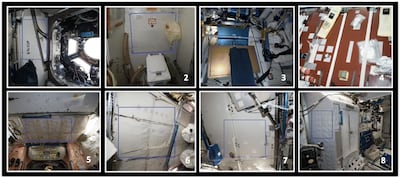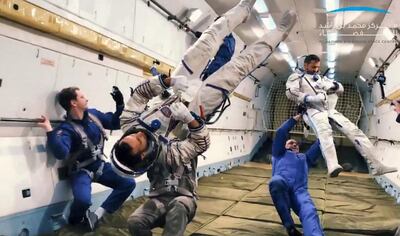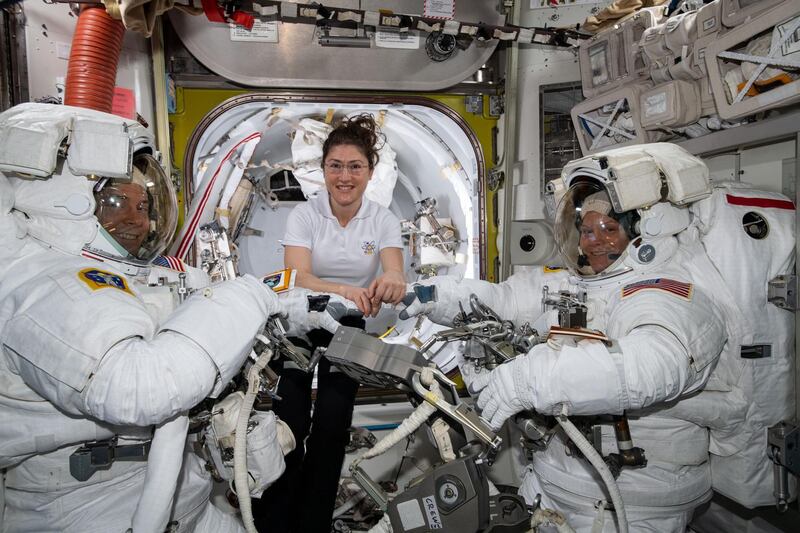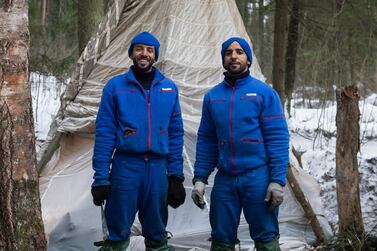Whoever is named the UAE's first astronaut later this year, they might want to take some disinfectant wipes with them to the International Space Station.
A Nasa study has just revealed that the place is teeming with bugs.
Since the first crew arrived in 2000, more than 230 astronauts have visited the ISS, orbiting over 300 km above the Earth.
But now it seems they weren’t the only ones making the trip.
By analysing swab samples taken around the ISS, scientists found over 200 different types of bacteria and fungi – including some whose natural home is the human gut.
More queasily still, some areas of the living quarters were coated with up to 10,000 bacteria and spores per square centimetre.
Perhaps out of consideration for the six current inhabitants, the Nasa team emphasised that many of the bugs are those commonly found in offices and gyms, like Staphylococcus.
Given the suspicions most people have about the state of offices and gyms, that may be little comfort.
But the report can’t hide some disturbing facts about what the survey uncovered. While most of the bugs cause little concern down on Earth, up in space it’s a different matter.

That’s because the disease-fighting immune system of astronauts becomes weaker during long missions. And if a simple infection suddenly turns nasty, there’s only basic medical equipment aboard the ISS.
Nor are humans alone in being at risk from the bugs found by the survey, published in the current issue of the journal Microbiome.
Some of the bacteria are known to secrete chemicals capable of corroding even metals over time – posing a threat to the structure of the ISS.
And then there’s the bugs found on the space station which are completely unknown to science. What their effects are is anyone’s guess.
What is clear is that hygiene issues pose a significant threat to the next goal in space exploration: sending astronauts to Mars.
Crews would be cooped up together for seven months simply to get to the Red Planet.

The fact is that spacecraft designers have always struggled with the problem that, for all their superhero image, all astronauts have bodily functions.
America’s first astronaut Alan Shepard discovered this to his extreme discomfort while waiting for blast-off in May 1961.
Countless technical hitches forced Shepard to urinate directly into his spacesuit - short-circuiting the sensors monitoring his heart and breathing rate.
Nasa’s brilliant engineers had simply forgotten a basic fact about humans. They set about solving it – but with limited success.
While orbiting the moon in 1969, the crew of Apollo 10 had a close encounter with a UFO – an Unidentified Faecal Object – which floated past them in the cabin.
While its precise origin was never established, the blame ultimately lay with the rudimentary adhesive bag system the three astronauts were compelled to use.
Half a century on, toilet technology has improved somewhat. The ISS has two units, both of which use a vacuum effect to cut the risk of spillages.
Even so, male astronauts are said to find it trickier to use than their female colleagues.
Nasa expects the ISS to continue operations for another decade at least. It must then decide how best to dispose of the 420-tonne leviathan. One plan is to send it into a higher orbit and leave it for others to sort out.
But given its current state, the best option might be to just let the whole fetid thing burn up in the atmosphere.







